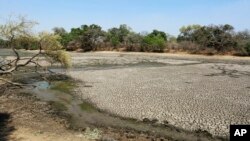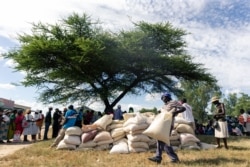Drought is taking a toll on Zimbabwe’s agricultural sector, with farmers in the western region losing their livestock at an alarming rate.
More than 4,500 cattle have died in Matabeleland South Province, a 500 percent increase over last year, the Ministry of Lands, Agriculture and Rural Resettlement reported in early November.
That figure may rise, because “there are still cases out there, which we don’t have access to, which farmers have not reported,” said the province’s crop and livestock officer, Simangaliphi Ngwabi.
Zimbabwe’s beef industry had been rebounding from its collapse in the 2000s, when it was devastated by hoof-and-mouth disease, according to the U.N. website Africa Renewal.
But that revival is threatened by drought, and the Meteorological Services Department doesn’t see relief anytime soon.
Muhle Masuku, a farmer and director of the beef startup Livestock Zone in Bulawayo, said traditional thinking about cattle is counterproductive when drought limits grass for grazing.
“In our culture, livestock is a status symbol,” meaning farmers might be reluctant to reduce herd size, Masuku said. He said farmers must strike a balance.
Ngwabi, the provincial officer, encourages shifting to hardy cattle breeds that are better suited to a harsh environment.
“We are recommending indigenous types of breeds — like in Matabeleland South, we have the Tulis,” she said of the medium-size beef cattle. “Those are the types we should be using. They are ideal because they adapted to our environment.”
Ngwabi also endorses raising small livestock such as goats, which can eat weeds and tough plants unappealing to cattle.
Chris Grant, who farms in Nyamayendlovu and Gwanda, said it doesn’t make sense for farmers to hold onto livestock and let herds starve, instead of selling some animals to buy food for the rest.
He has some cattle. But Grant said that losses of those large animals, along with a changing climate, led him to shift his focus to raising goats, particularly Kalahari Reds, a breed native to neighboring South Africa.
Like Ngwabi, Grant noted that goats are hardy. And he pointed out that their meat yields a better market price than beef cattle. Farmers were getting an average price per kilogram of $2.30 for goat and $1.15 for beef in early November.
Grant called for a shift in thinking to cope with global warming. “Droughts are not going away. We need to change the mindset,” he said.
According to Grant, education is essential in helping citizens prepare and care for their livestock, especially during droughts.
Resources for the government’s rural extension services are too limited to meet farmers’ needs, particularly with Zimbabwe’s strained economy, Ngwabi said. Zimbabwe has been struggling with a shrinking economy and triple-digit inflation.
“You are talking about outreach, and some of these areas are remote,” she said, adding that the office has relatively few people and resources such as vehicles to cover vast areas.
Crop failure and livestock deaths compound the country’s food security status, with more than 5 million of Zimbabwe’s 14 million people at risk and in need of food aid. Animals, especially cattle, are a critical source of income.
(This report originated in VOA’s English to Africa service. Gabrielle Hernandez, interning with VOA’s Africa Division, contributed from Washington.)









